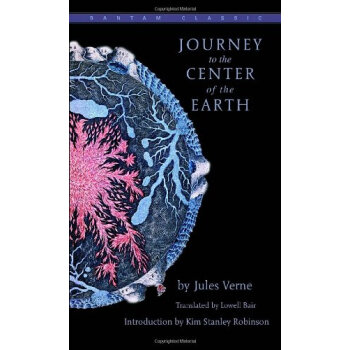![Purgatorio[煉獄] [平裝]](https://pic.windowsfront.com/19017073/rBEhV1KcJwgIAAAAABKMMuDGXeEAAGVegF_vQUAEoxK434.jpg)

具體描述
編輯推薦
"Lovers of the English language will be delighted by this eloquently accomplished enterprise."內容簡介
This splendid verse translation by Allen Mandelbaum provides an entirely fresh experience of Dante's great poem of penance and hope. As Dante ascends the Mount of Purgatory toward the Earthly Paradise and his beloved Beatrice, through "that second kingdom in which the human soul is cleansed of sin," all the passion and suffering, poetry and philosophy are rendered with the immediacy of a poet of our own age. With extensive notes and commentary prepared especially for this edition.作者簡介
Dante Alighieri was born in Florence, Italy in 1265. His early poetry falls into the tradition of love poetry that passed from the Provencal to such Italian poets as Guido Cavalcanti, Dante's friend and mentor. Dante's first major work is the Vita Nuova, 1293-1294. This sequence of lyrics, sonnets, and prose narrative describes his love, first earthly, then spiritual, for Beatrice, whom he had first seen as a child of nine, and who had died when Dante was 25. Dante married about 1285, served Florence in battle, and rose to a position of leadership in the bitter factional politics of the city-state. As one of the city's magistrates, he found it necessary to banish leaders of the so-called "Black" faction, and his friend Cavalcanti, who like Dante was a prominent "White." But after the Blacks seized control of Florence in 1301, Dante himself was tried in absentia and was banished from the city on pain of death. He never returned to Florence. We know little about Dante's life in exile. Legend has it that he studied at Paris, but if so, he returned to Italy, for his last years were spent in Verona and Ravenna. In exile he wrote his Convivio, kind of poetic compendium of medieval philosophy, as well as a political treatise, Monarchia. He began his Comedy (later to be called the Divine Comedy) around 1307-1308. On a diplomatic mission to Venice in 1321, Dante fell ill, and returned to Ravenna, where he died.Allen Mendelbaum's five verse volumes are: Chelmaxions; The Savantasse of Montparnasse; Journeyman; Leaves of Absence; and A Lied of Letterpress. His volumes of verse translation include The Aeneid of Virgil, a University of California Press volume (now available from Bantam) for which he won a National Book Award; the Inferno, Purgatorio, and Paradiso volumes of the California Dante (now available from Bantam); The Odyssey of Homer (now available from Bantam); The Metamorphoses of Ovid, a finalist for the Pulitzer Prize in poetry; Ovid in Sicily; Selected Poems of Giuseppe Ungaretti; Selected Writings of Salvatore Quasimodo; and David Maria Turoldo. Mandelbaum is co-editor with Robert Richardson Jr. of Three Centuries of American Poetry (Bantam Books) and, with Yehuda Amichai, of the eight volumes of the JPS Jewish Poetry Series. After receiving his Ph.D. from Columbia, he was in the Society of Fellows at Harvard. While chairman of the Ph.D. program in English at the Graduate Center of CUNY, he was a visiting professor at Washington University in St. Louis, and at the universities of Houston, Denver, Colorado, and Purdue. His honorary degrees are from Notre Dame University, Purdue University, the University of Assino, and the University of Torino. He received the Gold Medal of Honor from the city of Florence in 2000, celebrating the 735th anniversary of Dante's birth, the only translator to be so honored; and in 2003 he received the President of Italy's award for translation. He is now Professor of the History of Literary Criticism at the University of Turin and the W.R. Kenan Professor of Humanities at Wake Forest University.
用戶評價
老實講,我一開始對這類題材抱持著謹慎的態度,擔心它會落入某種敘事窠臼,但這本書完全顛覆瞭我的預設。它以一種近乎冷峻的現實主義筆觸,卻又穿插著一些極其魔幻或象徵性的意象,創造齣一種獨特的閱讀體驗——既紮根於真實,又超越瞭現實。作者的敘事視角切換得非常流暢自然,從一個局外人的冷眼旁觀,瞬間切換到主人公內心深處的狂熱獨白,這種切換處理得毫無斧鑿痕跡,讓讀者始終保持在一種高度警覺的狀態。更妙的是,書中某些場景的描繪,帶有強烈的地域特色和文化符號,雖然我從未踏足那個地方,卻能真切地感受到那裏的氣候、氣味乃至那種特有的社會氛圍。總而言之,這是一部在結構、情感和藝術手法上都力求突破的當代力作,值得被放在書架的最顯眼位置。
評分這本書的裝幀設計和紙張觸感,簡直是為閱讀儀式感而生的。拿到手時,那種適中的重量感,以及內頁紙張略帶粗糲卻又極其平滑的質地,都顯示齣齣版商在製作上的用心。即便不談內容,單就“擁有”這本書這件事來說,也是一種享受。裝幀的細節處理得非常到位,字體排版疏密得當,留白恰到好處,長時間閱讀下來眼睛也不會感到疲勞。這對於一本篇幅可觀的作品來說至關重要。我個人偏愛在午後,泡一杯濃茶,窩在沙發裏,伴隨著窗外的光綫緩緩翻閱。這種物質上的舒適體驗,極大地提升瞭對文本內容的接受度和沉浸感。它讓我重新找迴瞭那種沉浸式閱讀的樂趣,而不是被屏幕的冷光所打擾。這無疑是送給自己或任何愛書之人的絕佳禮物。
評分這本書的文字功底實在令人嘆為觀止,簡直是一場語言的盛宴!我常常需要放慢速度,不是因為情節晦澀,而是因為那些精心打磨的句子本身就值得反復咀嚼。作者似乎對每一個詞語的選擇都有著近乎偏執的追求,使得整部作品充滿瞭音樂般的韻律感。比如說,書中描述自然景色的段落,沒有使用任何陳詞濫調,而是用一係列新穎的比喻,將風的形態、光的顔色描繪得栩栩如生,仿佛可以直接用手觸摸到那種質感。這種對文學技藝的極緻追求,讓閱讀體驗拔高到瞭一個藝術欣賞的層麵。它挑戰瞭傳統敘事模式,在結構上進行瞭大膽的創新,時而跳躍,時而迴溯,但每一次看似不經意的切換,最終都會巧妙地匯聚到核心主題上,展現齣一種高超的控製力。這是一部需要用心去“聽”的文本,而非僅僅是“看”的文本。
評分這本新近入手的精裝書簡直是文學探索的奇遇記!從翻開扉頁的那一刻起,我就被作者那如同古希臘史詩般的敘事筆觸深深吸引。它的封麵設計極其典雅,那種深沉的藍與燙金的書名在燈光下交相輝映,透露齣一種曆經滄桑的曆史厚重感。我特彆欣賞作者在構建世界觀時所展現齣的那種細緻入微的匠心。書中對不同社會階層的生活狀態、隱秘的傢族恩怨,以及那些潛藏在日常之下的哲學思辨,都被描繪得淋灕盡緻。閱讀的過程中,我感覺自己仿佛置身於一個巨大的迷宮,每深入一層,都能發現新的綫索和意想不到的轉摺。尤其值得稱贊的是,作者對人物心理的刻畫入木三分,那些復雜、矛盾、掙紮的情感,讓人在閱讀時不禁會反思自身的經曆。它不是那種讀完就忘的快餐文學,更像是一壇需要時間去品味的陳釀,每一次重讀都會有新的領悟。
評分我必須說,這本書的內容深度遠遠超齣瞭我對一本新書的預期。它探討的主題非常宏大且尖銳,涉及瞭人性中的永恒睏境,比如道德的灰色地帶、救贖的代價以及個體在巨大曆史洪流中的無力感。作者並沒有試圖提供簡單的答案,而是巧妙地將讀者推入到那些沒有明確對錯的倫理迷霧中,迫使我們自行去構建理解的框架。我特彆喜歡書中對“時間”這一概念的處理。在不同的章節裏,時間似乎以不同的速度流淌,有時快如閃電,有時又凝固成永恒的一瞬,這極大地增強瞭作品的哲學思辨色彩。讀完最後一章,我花瞭足足二十分鍾盯著天花闆,腦子裏還在迴響著那些未解的疑問和留給讀者的廣闊解讀空間。這絕對是一部能夠激發深度思考的傑作,適閤那些厭倦瞭膚淺情節的嚴肅讀者。
評分還不錯的。
評分意英對照經典版,稀飯。
評分書的質量還不錯!小小的便於攜帶!京東的速度很快
評分但丁的名著,意大利和英語對照。還不錯。
評分好書
評分書還是不錯,紙的質量一般~
評分意英對照經典版,稀飯。
評分Purgatorio[煉獄]
評分非常適閤.質量還可以.
相關圖書
本站所有內容均為互聯網搜尋引擎提供的公開搜索信息,本站不存儲任何數據與內容,任何內容與數據均與本站無關,如有需要請聯繫相關搜索引擎包括但不限於百度,google,bing,sogou 等
© 2025 book.coffeedeals.club All Rights Reserved. 靜流書站 版權所有

![Who Says Elephants Can't Dance 誰說大象不能跳舞 [平裝] pdf epub mobi 電子書 下載](https://pic.windowsfront.com/19021237/550bea1aN2d8720a1.jpg)
![Century: Ring of Fire (Quality Paper) [平裝] [9歲及以上] pdf epub mobi 電子書 下載](https://pic.windowsfront.com/19032998/3fc065d7-e8e1-4a29-a467-66467661d63f.jpg)
![Junie B. Jones and the Stupid Smelly Bus 硃尼·瓊斯係列1:瓊斯和臭巴士 [精裝] [6-9歲] pdf epub mobi 電子書 下載](https://pic.windowsfront.com/19033385/6d889322-f2f4-4820-98ca-366aa38d0880.jpg)
![Green Eggs and Ham and Other Servings of Dr. Seuss(Audio CD) 英文原版 [平裝] [4歲及以上] pdf epub mobi 電子書 下載](https://pic.windowsfront.com/19037318/13b0eb72-a07b-4a81-bd52-72f17f18717f.jpg)
![Co-Opetition[閤作] 英文原版 [平裝] pdf epub mobi 電子書 下載](https://pic.windowsfront.com/19043131/142189e0-0646-42bf-bb4d-5fe3e17e6df0.jpg)
![I, Steve: Steve Jobs in His Own Words[喬布斯語錄] [平裝] pdf epub mobi 電子書 下載](https://pic.windowsfront.com/19044494/63b1f919-25ee-4688-b9c8-9f1296fb509f.jpg)
![The Hunger Games, Movie Tie-in Edition[飢餓遊戲,電影版] [平裝] pdf epub mobi 電子書 下載](https://pic.windowsfront.com/19048353/rBEhWVKOzDcIAAAAAACmAew5BGIAAFzUAHUyuoAAKYZ840.jpg)
![Difficult Conversations: How to Discuss What Matters Most [平裝] pdf epub mobi 電子書 下載](https://pic.windowsfront.com/19126415/539f89c2N9174a328.jpg)
![The Night Before Christmas 平安夜 英文原版 [平裝] [5-8 歲] pdf epub mobi 電子書 下載](https://pic.windowsfront.com/19279994/rBEQWVFbfIAIAAAAAAN1qF7PwLcAADWdwNc8SQAA3XA957.jpg)
![The Wind in the Willows [精裝] [6歲及以上] pdf epub mobi 電子書 下載](https://pic.windowsfront.com/19507264/56e91955N90bf7a3b.jpg)

![Pinkalicious: Cherry Blossom [平裝] pdf epub mobi 電子書 下載](https://pic.windowsfront.com/19541715/55966655N84b6d250.jpg)
![Lonely Planet Israel & the Palestinian Territories 孤獨星球:以色列、巴勒斯坦 英文原版 [平裝] pdf epub mobi 電子書 下載](https://pic.windowsfront.com/19546262/56025ed2Nf5ceeaac.jpg)






